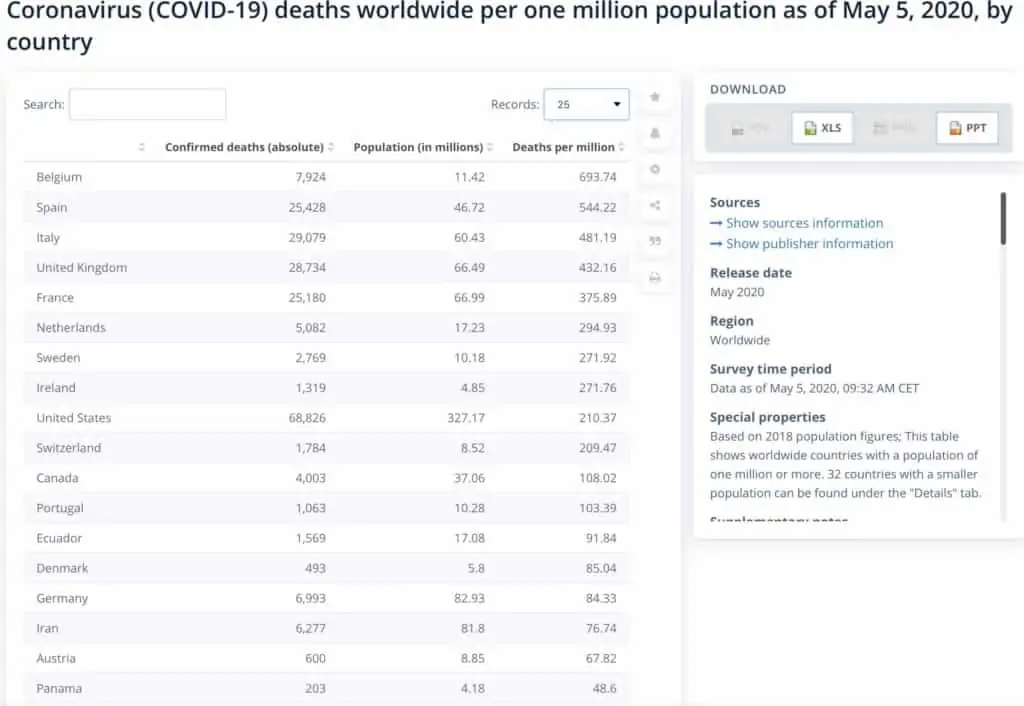As Sweden’s numbers of cases and deaths rise, the officials who relied mostly on herd immunity have adopted emergency powers should they need to suddenly close down. Their cases and death rates compared to their neighbors Finland, Denmark, and Norway, with half the population of Sweden, are far worse, but not compared to some of their European neighbors.
THEIR STRATEGY IS HERD IMMUNITY
The Swedish government advised citizens to stay at and work from, home if possible. Bars and restaurants remain open but social-distancing measures have been implemented, while schools for the under-16s remain open.
The strategy is very controversial but its chief epidemiologist has defended the approach, telling CNBC last week that the capital Stockholm could be heading for “herd immunity” in weeks.
They also believe you shouldn’t do something so restrictive that it is unsustainable.
Authorities were tracing the movements of infected people in order to contact others who might have been exposed to the virus, and test them if it was deemed necessary. The Public Health Agency has said that when this was done, it was typically only the closest contacts such as family members or close colleagues who also tested positive, rather than for example others who had been on the same flight or train.
They aren’t finding it effective.
PERCENTAGES
If you look at the percentage of deaths with known cases as the denominator, they have a 12% – 13% death rate. The denominator is a fallacy, however, since not everyone is tested and we don’t know who had it and is not recorded. There are a lot of asymptomatic people out there no one knows about.
If you use their population as the denominator to determine death rate, it’s roughly 271 per million. Ireland shut down completely and has the same death rate. Denmark is 85 per million, Finland is 43 per million, Norway is 40 per million (Norway, Denmark, Ireland, and Finland have half the population of Sweden).
CNBC reports Sweden’s economy will contract as badly as if they had closed down. We don’t know if that’s true, but you can read about it here. Their supply chains are disrupted but their small businesses are open.
MOVING AWAY FROM TESTING EVERYONE AND COMMUNITY TRACING
Contrary to rumors, Sweden did not stop testing. They do random — sentinel — testing as most have done in the past. They also prioritize testing.
Authorities have shifted their focus away from testing all possible cases, and instead on protecting the most vulnerable groups. People with severe respiratory symptoms or who belong to a risk group will still be tested.
“The previous strategy of catching all cases of illness, by testing people who get symptoms after traveling in certain areas abroad, is no longer the most effective,” the Public Health Agency. “This means that everyone who is sick with a cold- or flu-like symptoms should be at home so as not to risk spreading the infection to others.”
That means anyone who is generally healthy but has symptoms of the coronavirus (including a fever and cough) is advised to stay at home and limit social contact until they have been symptom-free for at least two days, but they may not be tested
They made the big change at the first signs of community infection.
South Korea is being held up as a good example of effective widespread testing, carrying out 15,000 tests per day, second only to China in terms of numbers.
By March 17th, Sweden had carried out just over 14,000 tests, compared to 148,657 in Italy, 50,442 in the UK, 41,552 in the US, and 7,620, according to figures collated by Our World in Data using national health authorities’ figures, in Sweden’s case the data provided by the Public Health Agency.
By March 17th, Sweden had carried out 1,412.8 tests per million people living in the country, putting it slightly behind Italy (2,514), but ahead of Denmark (1,314.5), the UK (749.1) and the US (125.4) for example.
Many other countries have also had to move away from testing every suspected case and contract-tracing.
For example, France is testing: healthcare professionals, those who have severe symptoms, vulnerable people (for example the elderly or people with serious underlying health conditions), and people in a group setting such as a care home who have symptoms. France currently has the capacity to perform 2,500 tests a day.
In Germany, people are asked to contact their doctor or coronavirus hotline number if they have symptoms and the doctor will then decide if they should be tested or not.
In the U.S., the president has pushed for expansive testing. U.S. labs have produced tests in record time that test quickly with good accuracy. Soon, we will have a home test kit available. And we are just now opening up some businesses in some states while 30 million collect unemployment. The House of Representatives won’t go to work, proving they’re very dispensible. No one misses them.





I’ll just say this about the House.
https://youtu.be/Tl3a1hh1hHQ?t=45
https://youtu.be/VakU20APPdw?t=3